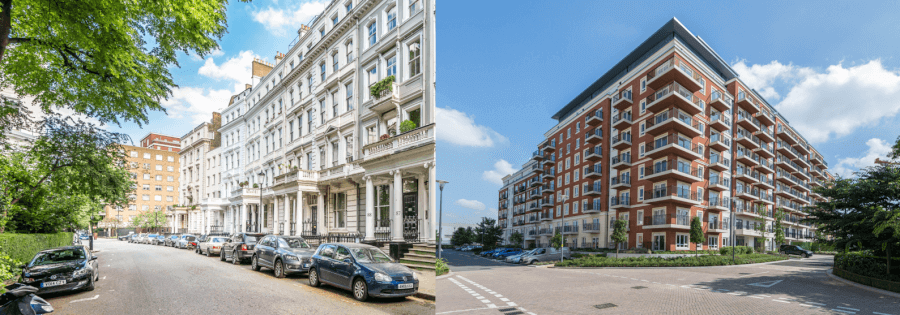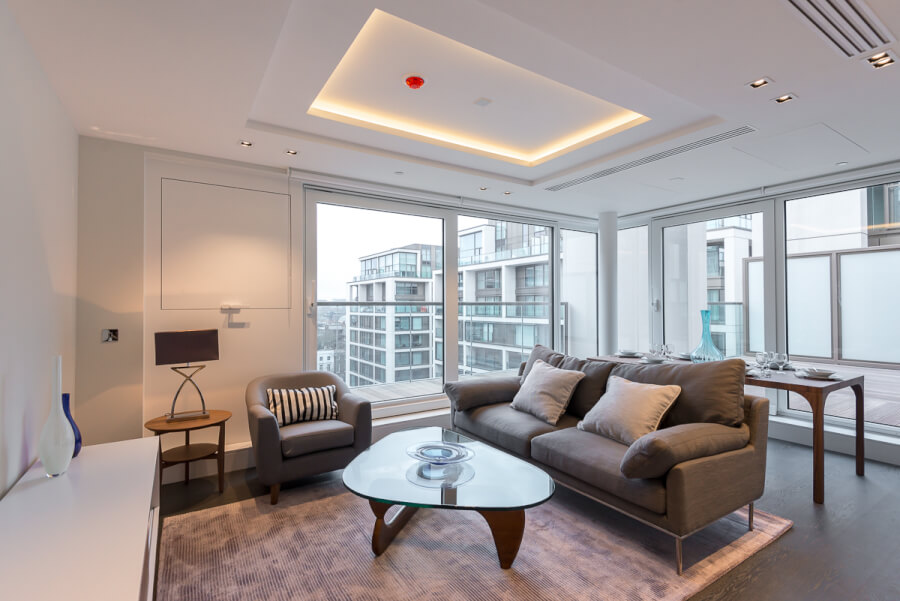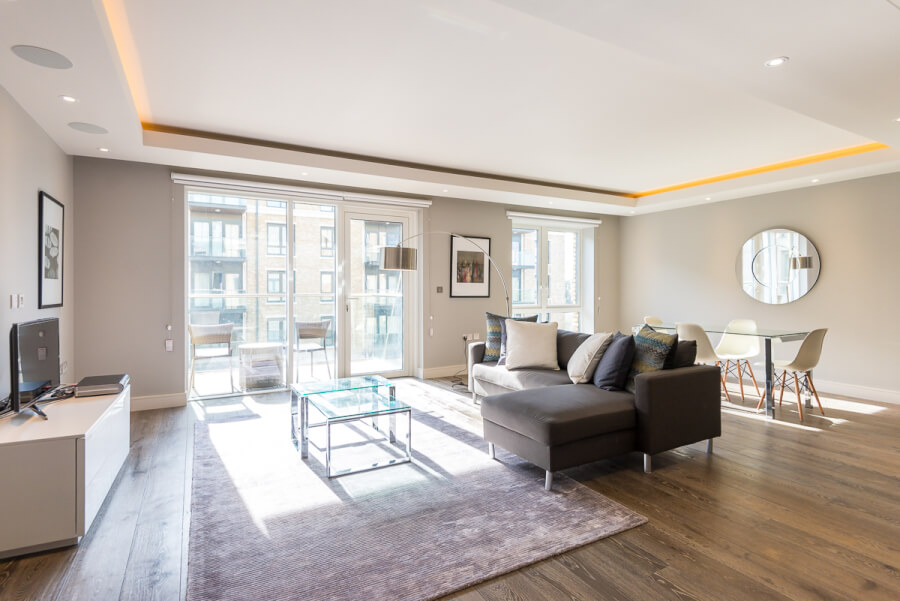- Selling
- Buying
- Landlords
- Renting
- New homes
- House prices
- International services
International offices
China, Hong Kong SAR, India, Indonesia, Malaysia, Middle East, Pakistan, Qatar, Singapore, South Africa, Thailand and Turkey
Learn more - Contact
- News
- Contact
- About us
- My B&R
Period conversions v new builds
- Landlords news
- 04.07.17
- Benham and Reeves
|
Getting your Trinity Audio player ready...
|
 When an American media executive was hunting for property in London recently, he expressed astonishment that anyone could even countenance a new build. Raised in Los Angeles, the oldest building in his neighbourhood was constructed in the mid-fifties and he craved the character and history of English period homes. His attitude reflects that of many in the Capital who see living in a period property as a way of maintaining links with a certain heritage and culture.
When an American media executive was hunting for property in London recently, he expressed astonishment that anyone could even countenance a new build. Raised in Los Angeles, the oldest building in his neighbourhood was constructed in the mid-fifties and he craved the character and history of English period homes. His attitude reflects that of many in the Capital who see living in a period property as a way of maintaining links with a certain heritage and culture.
The spaciousness and access to a garden are two of the more obvious family-friendly advantages of a late 19th Century home, especially since these features seem to be disappearing. Back then, a medium sized home contained two receptions and four bedrooms spread over 1,647 sq. ft., while today, a typical family home would only have three bedrooms and has shrunk to 910 sq. ft. Over the same time, ceiling heights were cut from ten to eight feet. The footprint of smaller terrace homes has also been reduced from three bedrooms occupying 1,020 sq. ft. to two bedrooms occupying 645 sq.ft. There is, therefore, a definite advantage in renting a period conversion over a new build regarding available square footage.

Of course, these factors have boosted the profile of certain neighbourhood’s that have maintained their period housing stock. Areas like Kensington, Chelsea and Knightsbridge have a high proportion of pristine Victorian red brick mansion blocks and stucco fronted Georgian terraces and this makes them prime targets in London’s luxury rental sector. Local authorities have achieved this, by way of tough planning regulations, but when one looks around West London then it’s clear that developers have raised their game accordingly. Although still thin on the ground, new builds such as The Knightsbridge, Chelsea Cloisters and 375 Kensington High Street are serious alternatives to traditional apartment blocks. Landlords of period properties can, and indeed already have, risen to this challenge. The sumptuous Art Deco exterior of Nell Gwynn House in ever-fashionable Sloane Street, contains apartments that are equipped with the very latest in kitchen technology, climate control innovations and digital connectivity.
Further out in Zones 2 and 3, new builds are enjoying an even bigger resurgence. Period properties in Ealing and Kew won’t command Chelsea-style rents and therefore can’t provide Chelsea-style amenities. However, Dickens Yard Ealing and the Kew Bridge property scheme – the two flagship property developments in these areas – score heavily in the areas of transport connectivity, on-site facilities and contemporary interiors. Another advantage that tenants are discovering here is the commercial offerings that reside within these schemes, from convenient grocery stores and restaurants to childcare services and business services such as our lettings branches on their doorstep.
Another neighbourhood that has seen increased instances of new build accommodation is Greenwich. The SE10 area is eminently suitable for young families because of its proximity to both the River Thames and a Royal Park while still being 10 minutes from Canary Wharf. This means that roomy period houses are still in high demand, though this might change as there are some very ambitious new developments in the pipeline.
The international background of many who rent in London has played a crucial role in how certain districts are perceived. Americans and Western Europeans are keen on period homes, albeit those with a very high standard of interior modifications. Let’s just say that a love of Georgian stonework does not extend to it obstructing a state of the art kitchen or bathroom. American residents tend to be employed by one of the big US investment banks based in Canary Wharf and have an emotional connection to anywhere near Mayfair. Immaculately refurbished period mansion blocks in Knightsbridge as well as anywhere on the Jubilee Line (St John’s Wood, Marylebone) would be of immediate interest. With the US Embassy due to relocate to Nine Elms, new property schemes such as Nine Elms Point and Battersea Power Station might be the new-build exceptions to this rule.
Our French tenants like to be near their natural cultural base in South Kensington. They’ve become a bit more adventurous of late as new French schools have been established in Kentish Town and Ealing. Again, a high level of refurbishment is required to attract such tenants.
Wealthy Russian tenants have, in the past, gone for mega-status trophy homes, crammed with every imaginable modern security gadget and luxury amenity. A weak rouble and stagnant oil prices have made many consider renting high profile homes rather than buying, with attention being paid to villagey locations such as Fitzrovia and even Highgate where they can find lots of space for their deposit boxes!

Prospective tenants from China, Japan and Southeast Asia put a high premium on security and therefore favour gated and secure communities. A swathe of new property developments stretching along the Thames shoreline such as Fulham Reach Hammersmith, Imperial Wharf Fulham and others near Chelsea Embankment are high on their list now.
Not every culture will put a premium on original features and uniqueness, but parking availability affects us all. Underground parking has, increasingly, been an important part of many new developments, together with on-site shops and private gyms. This will especially come into play where the parking permits for the surrounding streets are virtually nonexistent. On the other hand, period properties are usually located in areas where permits are available for at least one vehicle
So how do tenants choose between a characterful period home and a convenient new build when renting in London? The answer seems to lie in how many of life’s modern comforts they are prepared to sacrifice and for how long, especially in the kitchen and bathroom department. Period homes can be expensive to keep updated and structural changes often need time consuming planning permission and is the single highest reason why Landlords don’t update as much as they would like as the cost has to be covered and can in some instances push up rents.
It may be that new property developments are now starting to take on a rather appealing look. After all, what’s not to like? Easier maintenance and no structural issues usually. It might be good to point out here that professional property management is essential for a smooth running tenancy. If you are thinking of renting a home, do check with your agent if the property you are interested in is fully managed and what this includes.
Many of apartments are now built in sympathy with the local architecture: The Nova Building in SW1 being a very good example that blends in perfectly with its’ Victorian neighbours. New apartments in purpose-built buildings can also be ideal for flat sharers as generally, anything larger than a one bedroom apartment will always have two bathrooms.
The best way forward for any prospective tenant is to write a wish-list of what works best for them before going through it with their letting agent, who should be able to advise whether a period home or a new-build home is best for them. If you are looking to rent a property in the capital, do get in touch or subscribe to our monthly newsletter.
Sign up to our newsletter
Subscribe
How much is your property worth?
Media enquiries
About the Author
Established in 1958, Benham and Reeves is one of London’s oldest, independently owned property lettings and sales agents. With specialism in residential sales, corporate lettings and property management in prime areas of London, the company operates from 21 prominently located branches and 14 international offices.View all posts by Benham and Reeves














